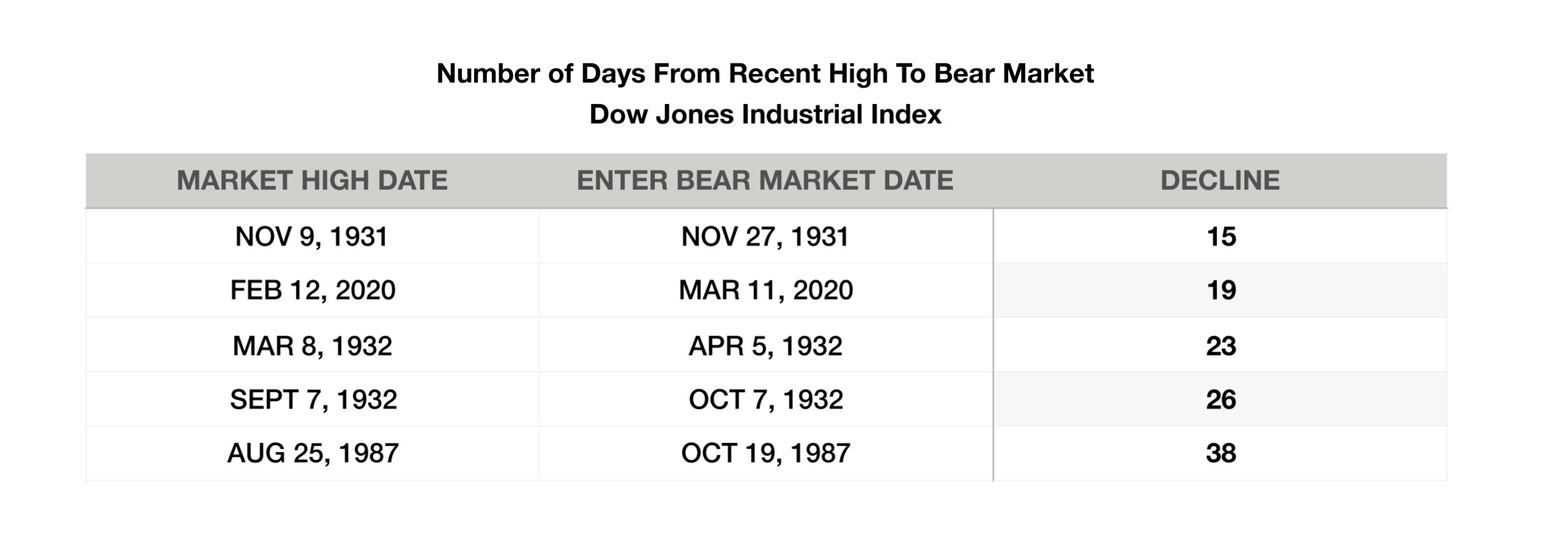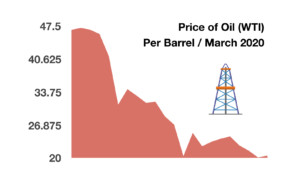
W.P. "Bill" Atkinson, III
Certified Financial Planner TM / Attorney
Access Financial Resources, Inc.
3621 NW 63rd Street, Suite A1
Oklahoma City, OK 73116
(405) 848-9826
Stock Indices:
| Dow Jones | 44,094 |
| S&P 500 | 6,204 |
| Nasdaq | 20,369 |
Bond Sector Yields:
| 2 Yr Treasury | 3.72% |
| 10 Yr Treasury | 4.24% |
| 10 Yr Municipal | 3.21% |
| High Yield | 6.80% |
YTD Market Returns:
| Dow Jones | 3.64% |
| S&P 500 | 5.50% |
| Nasdaq | 5.48% |
| MSCI-EAFE | 17.37% |
| MSCI-Europe | 20.67% |
| MSCI-Pacific | 11.15% |
| MSCI-Emg Mkt | 13.70% |
| US Agg Bond | 4.02% |
| US Corp Bond | 4.17% |
| US Gov’t Bond | 3.95% |
Commodity Prices:
| Gold | 3,319 |
| Silver | 36.32 |
| Oil (WTI) | 64.98 |
Currencies:
| Dollar / Euro | 1.17 |
| Dollar / Pound | 1.37 |
| Yen / Dollar | 144.61 |
| Canadian /Dollar | 0.73 |
Macro Overview
With the coronavirus continuing to wreak havoc on markets and economies worldwide, governments and businesses are confronting an unprecedented environment. In response, massive fiscal and monetary stimulus efforts put into motion by the administration and the Federal Reserve are expected to provide unparalleled economic stimulus.
The World Health Organization (WHO), whose acronym seems to properly fit it, declared the COVID-19 virus a pandemic on March 11th, sending global equities further down and ending the longest bull run in U.S. history. The 20% plus decline for all three major equity indices, from record highs set in mid-February, qualified the rapid descent as an end to the bull market that began in March 2009. The International Monetary Fund (IMF) determined that the global economy has fallen into a recession due to disrupted global supply chains and a drop in commerce induced by the virus outbreak.
The $2.2 trillion stimulus plan passed by Congress, known as the Cares Act, was the largest in U.S. history, providing funds to small business owners and individuals nationwide who have been ordered to remain at home and conduct only essential business. Massive federal borrowing will fund the program in the form of U.S. government debt issuance expected to exceed $2 trillion in short-term Treasury bills this year alone.
Some economists and market analysts view this pandemic as a health crisis at its core, not a financial crisis, which has preceded nearly all previous recessions. Atlanta Fed President Raphael Bostic said that “this is a public health crisis and different from a typical recession”. Dallas Fed President Robert Kaplan expressed some optimism by commenting “we’ve got a great chance to come out of this very strong”. However, some view government restrictions and mandatory closures as the reason behind crippled businesses and the economic contraction, not the coronavirus itself. In any event, to me it seems as though the health crisis exposed our financial vulnerability – after all many businesses could not last more than a week before the employees were fired and doors were shuttered.
It is too soon to determine as to what the overall impact will be to the multitude of industries and companies over the next few months – but small and mid-size businesses are getting hit hard. Globalization is in question as global commerce has dwindled due to supply chain constraints, along with varying rules and restrictions among countries involving cross-border transactions.
A historical spike in unemployment claims of nearly 10 million was brought about by mass layoffs as governmental entities mandated business closures and restrictions across the country. The immense jump in unemployment claims over just two weeks may very well worsen over the coming weeks, yet its is expected to be buffeted by funds targeted for the unemployed as a result of the $2.2 trillion stimulus plan and the Payroll Protection Act which encourages small businesses to re-hire employees to qualified for loan forgiveness. Personal and business bankruptcies are expected to rise dramatically as a result of government-mandated shutdowns, which have halted incomes for employers and employees across the country. (Sources: IMF, WHO, Fed, Treasury, IRS, Dept. of Labor)

 essive attempt to capture market share from Russia, Saudi Arabia dropped their oil prices and ramped up supply to over 12 million barrels a day, 2 million more than previous supply levels. The newly launched oil price war cratered global stock markets with the largest one day decline since 2008. The sudden and swift decline in oil prices has intensified profitability issues for U.S. producers, who have seen margins fall as prices have leveled off over the past few months. Sudden declines in global demand for oil due to the virus outbreak have also added to downward pressures.
essive attempt to capture market share from Russia, Saudi Arabia dropped their oil prices and ramped up supply to over 12 million barrels a day, 2 million more than previous supply levels. The newly launched oil price war cratered global stock markets with the largest one day decline since 2008. The sudden and swift decline in oil prices has intensified profitability issues for U.S. producers, who have seen margins fall as prices have leveled off over the past few months. Sudden declines in global demand for oil due to the virus outbreak have also added to downward pressures.